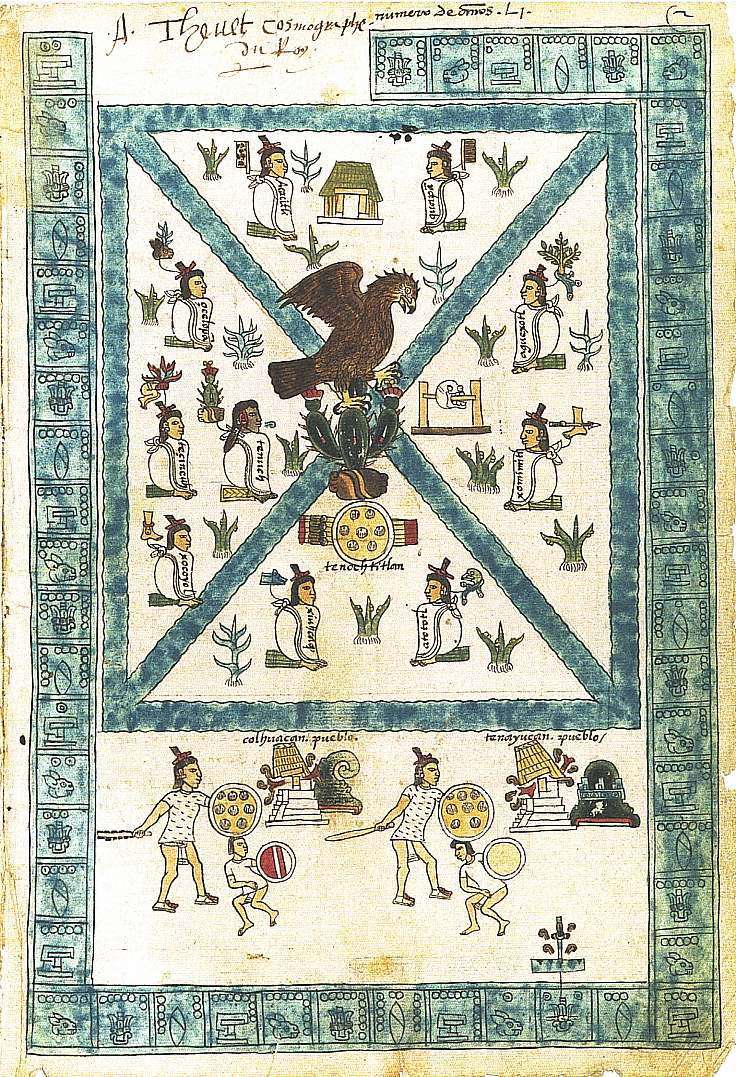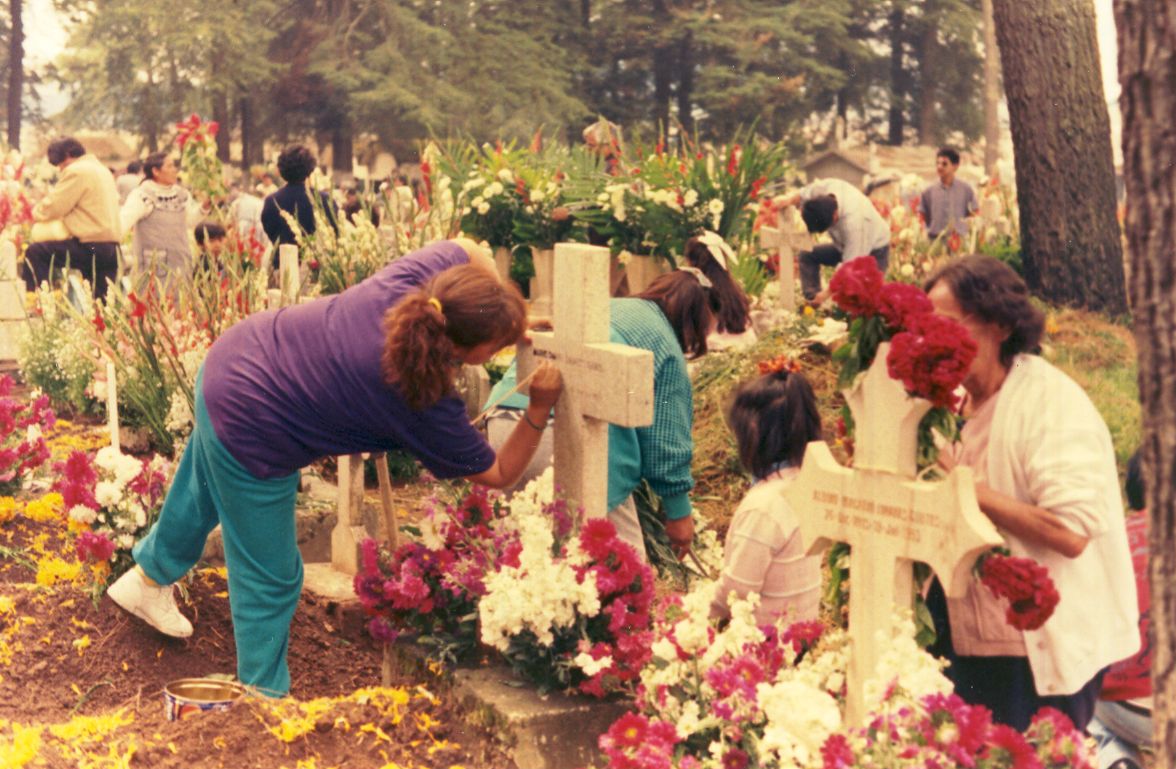|
Museo Nacional De Culturas Populares
Museo Nacional de las Culturas Populares (National Museum of Popular Cultures) is a museum in Mexico City dedicated to Mexico's ethnic and cultural diversity. This diversity not only includes that of its indigenous peoples, but also those of its regions and socioeconomic strata. It was founded in 1982 by anthropologist Guillermo Bonfil Batalla at a time when the country was accepting and promoting its cultural diversity. The museum does not have a large permanent collection but rather focuses on temporary exhibits, concerts, workshops and other cultural and educational events as well as promoting the creation of museums in Mexico to promote local cultures. The museum is also home to the Centro de Información y Documentación Alberto Beltrán, founded in 1971 to promote research and knowledge about Mexican handcrafts and folk art and indigenous ethnicities. Description The museum was established as part of the acknowledgement in the latter 20th century that Mexico consists of vari ... [...More Info...] [...Related Items...] OR: [Wikipedia] [Google] [Baidu] |
Coyoacán
Coyoacán ( , ) is a borough (''demarcación territorial'') in Mexico City. The former village is now the borough's "historic center". The name comes from Nahuatl and most likely means "place of coyotes", when the Aztecs named a pre-Hispanic village on the southern shore of Lake Texcoco dominated by the Tepanec people. Against Aztec domination, these people welcomed Hernán Cortés and the Spanish, who used the area as a headquarters during the Spanish conquest of the Aztec Empire and made it the first capital of New Spain between 1521 and 1523. The village and later municipality of Coyoacán remained completely independent of Mexico City through the colonial period into the 19th century. In 1857, the area was incorporated into the then Federal District when this district was expanded. In 1928, the borough was created when the Federal District was divided into sixteen boroughs. The urban sprawl of Mexico City reached the borough in the mid-20th century, turning farms, former l ... [...More Info...] [...Related Items...] OR: [Wikipedia] [Google] [Baidu] |
State Of Mexico
The State of Mexico ( es, Estado de México; ), officially just Mexico ( es, México), is one of the 32 federal entities of the United Mexican States. Commonly known as Edomex (from ) to distinguish it from the name of the whole country, it is the most populous, as well as the most densely populated, state in the country. Located in South-Central Mexico, the state is divided into 125 municipalities. The state capital city is Toluca de Lerdo ("Toluca"), while its largest city is Ecatepec de Morelos ("Ecatepec"). The State of Mexico surrounds Mexico City on three sides and borders the states of Querétaro and Hidalgo to the north, Morelos and Guerrero to the south, Michoacán to the west, and Tlaxcala and Puebla to the east. The territory that now comprises the State of Mexico once formed the core of the Pre-Hispanic Aztec Empire. During the Spanish colonial period, the region was incorporated into New Spain. After gaining independence in the 19th century, Mexico City w ... [...More Info...] [...Related Items...] OR: [Wikipedia] [Google] [Baidu] |
Huichol People
The Huichol or Wixárika are an indigenous people of Mexico and the United States living in the Sierra Madre Occidental range in the states of Nayarit, Jalisco, Zacatecas, and Durango, as well as in the United States in the states of California, Arizona, New Mexico, and Texas. They are best known to the larger world as the ''Huichol'', although they refer to themselves as ''Wixáritari'' ("the people") in their native Huichol language. The adjectival form of ''Wixáritari'' and name for their own language is ''Wixárika''. The ethnonym huichol comes from the adaptation to the language Nahuatl from the ethnonym wixarika, due to that in the language wixarika the a can be spoken like o; r y l are allophones, and the pronunciation of x, that was a sibilant, was read as an affricate, tz, between the 17th and 18th centuries (time period in which the word could have been borrowed), but the loss of the syllable -ka resulted in huitzol en náhuatl, and its hispanicization, wirraricas. T ... [...More Info...] [...Related Items...] OR: [Wikipedia] [Google] [Baidu] |
Purépecha People
The Purépecha (endonym pua, P'urhepecha ) are a group of indigenous people centered in the northwestern region of Michoacán, Mexico, mainly in the area of the cities of Cherán and Pátzcuaro. They are also known by the pejorative "Tarascan", an exonym, applied by outsiders and not one they use for themselves. The Purépecha occupied most of Michoacán but also some of the lower valleys of both Guanajuato and Jalisco. Celaya, Acambaro, Cerano, and Yurirapundaro. Now, the Purépecha live mostly in the highlands of central Michoacán, around Lakes Patzcuaro and Cuitzeo. History Prehispanic history It was one of the major empires of the Pre-Columbian era. The capital city was Tzintzuntzan. Purépecha architecture is noted for step pyramids in the shape of the letter "T". Pre-Columbian Purépecha artisans made feather mosaics that extensively used hummingbird feathers, which were highly regarded as luxury goods throughout the region. During the Pre-Colonial era, the Pur� ... [...More Info...] [...Related Items...] OR: [Wikipedia] [Google] [Baidu] |
Rebozo
A rebozo is a long flat garment, very similar to a shawl, worn mostly by women in Mexico. It can be worn in various ways, usually folded or wrapped around the head and/or upper body to shade from the sun, provide warmth and as an accessory to an outfit. It is also used to carry babies and large bundles, especially among indigenous women. The origin of the garment is unclear, but most likely derived in the early colonial period, as traditional versions of the garment show indigenous, European and Asian influences. Traditional rebozos are handwoven from cotton, wool, silk and rayon in various lengths but all have some kind of pattern (usually from the ikat method of dying) and have fringe, which can be finger weaved into complicated designs. The garment is considered to be part of Mexican identity and nearly all Mexican women own at least one. It has been prominently worn by women such as Frida Kahlo, actress María Félix and former Mexican first lady Margarita Zavala and still po ... [...More Info...] [...Related Items...] OR: [Wikipedia] [Google] [Baidu] |
Sexual Diversity
Gender and sexual diversity (GSD), or simply sexual diversity, refers to all the diversities of sex characteristics, sexual orientations and gender identities, without the need to specify each of the identities, behaviors, or characteristics that form this plurality. Overview In the Western world, generally simple classifications are used to describe sexual orientation (heterosexuals, homosexuals and bisexuals), gender identity (transgender and cisgender), and related minorities (intersex), gathered under the acronyms LGBT or LGBTQIA+ (lesbian, gay, bisexual, asexual, transgender/transsexual people, and sometimes intersex people); however, other cultures have other ways of understanding the sex and gender systems. Over the last few decades, some sexology theories have emerged, such as Kinsey theory and queer theory, proposing that this classification is not enough to describe the sexual complexity in human beings and, even, in other animal species. For example, some people may ... [...More Info...] [...Related Items...] OR: [Wikipedia] [Google] [Baidu] |
Table Dance
A table dance, or bartop dance, is a dance performed at (or on) a table or bar, as opposed to on a stage. It may be an erotic dance performed by a sex worker or it may be done as a leisure activity. Sex work In some jurisdictions, a table dance may be an alternative to a lap dance, due to laws preventing exotic dancers from making contact with customers. For example, in Waterloo, Ontario, a table dance is performed on a small portable platform the dancer takes around to patrons’ tables. The Windmill Theatre in Soho, London operated as a strip club from the 1990s until 2018. The club's licensing conditions included a "no touching" rule and the club had a licence for striptease, pole-dancing and table dancing. Establishments Similar is the ''bartop dance'', performed for the entertainment of those seated at the bar. The film '' Coyote Ugly'' ushered in a fad of bartop dancing establishments. Set in New York City's bar of the same name, several establishments around the city (e.g ... [...More Info...] [...Related Items...] OR: [Wikipedia] [Google] [Baidu] |
Votive Paintings Of Mexico
Votive paintings in Mexico go by several names in Spanish such as “ex voto,” “ retablo” or “lámina,” which refer to their purpose, place often found, or material from which they are traditionally made respectively. The painting of religious images to give thanks for a miracle or favour received in this country is part of a long tradition of such in the world. The offering of such items has more immediate precedence in both the Mesoamerican and European lines of Mexican culture, but the form that most votive paintings take from the colonial period to the present was brought to Mexico by the Spanish. As in Europe, votive paintings began as static images of saints or other religious figures which were then donated to a church. Later, narrative images, telling the personal story of a miracle or favor received appeared. These paintings were first produced by the wealthy and often on canvas; however, as sheets of tin became affordable, lower classes began to have these pa ... [...More Info...] [...Related Items...] OR: [Wikipedia] [Google] [Baidu] |
Tzompantli
A () or skull rack was a type of wooden rack or palisade documented in several Mesoamerican civilizations, which was used for the public display of human skulls, typically those of war captives or other sacrificial victims. It is a scaffold-like construction of poles on which heads and skulls were placed after holes had been made in them. Many have been documented throughout Mesoamerica, and range from the Epiclassic () through early Post-Classic ().Mendoza (2007) pg 397 In 2017 archeologists announced the discovery of the Hueyi Tzompantli, with more than 650 skulls, in the archeological zone of the Templo Mayor in Mexico City. Etymology The name comes from the Classical Nahuatl language of the Aztecs but is also commonly applied to similar structures depicted in other civilizations. Its precise etymology is uncertain although its general interpretation is 'skull rack', 'wall of skulls', or 'skull banner'. It is most likely a compound of the Nahuatl words ('skull'; from or ... [...More Info...] [...Related Items...] OR: [Wikipedia] [Google] [Baidu] |
Day Of The Dead
The Day of the Dead ( es, Día de Muertos or ''Día de los Muertos'') is a holiday traditionally celebrated on November 1 and 2, though other days, such as October 31 or November 6, may be included depending on the locality. It is widely observed in Mexico, where it largely developed, and is also observed in other places, especially by people of Mexican heritage. Although related to the simultaneous Christian remembrances for Hallowtide, it has a much less solemn tone and is portrayed as a holiday of joyful celebration rather than mourning. The multi-day holiday involves family and friends gathering to pay respects and to remember friends and family members who have died. These celebrations can take a humorous tone, as celebrants remember funny events and anecdotes about the departed. Traditions connected with the holiday include honoring the deceased using calaveras and marigold flowers known as ''cempazúchitl'', building home altars called '' ofrendas'' with the favorite fo ... [...More Info...] [...Related Items...] OR: [Wikipedia] [Google] [Baidu] |
Tamale
A tamale, in Spanish tamal, is a traditional Mesoamerican dish made of masa, a dough made from nixtamalized corn, which is steamed in a corn husk or banana leaf. The wrapping can either be discarded prior to eating or used as a plate. Tamales can be filled with meats, cheeses, fruits, vegetables, herbs, chilies, or any preparation according to taste, and both the filling and the cooking liquid may be seasoned. ''Tamale'' is an anglicized version of the Spanish word (plural: ). comes from the Nahuatl . The English "tamale" is a back-formation of , with English speakers interpreting the ''-e-'' as part of the stem, rather than part of the plural suffix ''-es''. Origin Tamales originated in Mesoamerica as early as 8000 to 5000 BC. The preparation of tamales is likely to have spread from the indigenous cultures in Guatemala and Mexico to the rest of Latin America. According to archaeologists Karl Taube, William Saturno, and David Stuart, tamales may date from around ... [...More Info...] [...Related Items...] OR: [Wikipedia] [Google] [Baidu] |
Nopal
Nopal (from the Nahuatl word for the pads of the plant) is a common name in Spanish for ''Opuntia'' cacti (commonly referred to in English as ''prickly pear''), as well as for its pads. There are about 114 known species in Mexico, where it is a common ingredient in numerous Mexican cuisine dishes. The nopal pads can be eaten raw or cooked, used in marmalades, soups, stews and salads, as well as being used for traditional medicine or as fodder for animals. Farmed nopales are most often of the species ''Opuntia ficus-indica'' or ''Opuntia matudae'' although the pads of almost all ''Opuntia'' species are edible. The other part of the nopal cactus that is edible is the fruit, called the in Spanish and the "prickly pear" in English. Nopales are generally sold fresh in Mexico, cleaned of thorns, and sliced to the customer's desire on the spot. They can also be found canned or bottled as nopalitos, and less often dried, especially for export. Cut into slices or diced into cubes, n ... [...More Info...] [...Related Items...] OR: [Wikipedia] [Google] [Baidu] |




_(LOC)_(5268915685).jpg)



